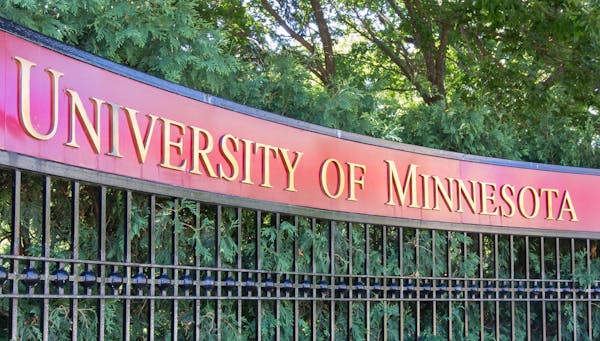The status quo is holding — albeit shakily — in Minnesota higher education. That's the upshot of decisions this week by the governing boards of the University of Minnesota and the Minnesota State Colleges and Universities to adopt the tuition increases they said would be necessary if the 2017 Legislature's appropriations fell below their requests — as, predictably, they did.
The tuition boosts are small and, after years of restraint, arguably overdue. At the U, President Eric Kaler shaved his originally proposed 3 percent hike to 2 percent for resident undergraduate tuition at the Twin Cities campus, while boosting nonresident/non-reciprocity tuition an eye-popping 12.5 percent. Smaller increases are in store at the U's other campuses.
At Minnesota State, four-year universities will see a 3.9 percent increase, or $272 on average. The tuition hike at the system's two-year colleges will be held to 1 percent, or $48, as dictated by the Legislature, which has imposed a systemwide tuition freeze for 2018-19. (The Legislature has constitutional authority to make such demands of Minnesota State but not the U.)
Legislators were on notice that tuition increases would ensue if they didn't boost the state's biennial appropriation to the two systems by the requested $325 million. That awareness may explain why legislators put a goodly $36 million more into the State Grant Program, Minnesota's means-tested financial aid for resident public and private college students. That will soften the tuition consequences of a higher ed bill that met the systems' total request only halfway with $161 million in new spending — two thirds of it for Minnesota State, one third for the U.
That plus the tuition increases will be enough — almost — to sustain the status quo for the coming two years.
The problem is that the status quo isn't good enough. Not for a state whose prosperity is highly dependent on its educated workforce and whose demand for college-educated workers ranks high among the states. Not for a state where baby boomer retirements are depleting the ranks of educated workers. Not for a state whose rapidly growing racial minority population lags the majority population in educational attainment.
Not for a state whose middle-income families — those just beyond the reach of state and federal financial aid programs — are struggling to afford college. And whose young adults bear the fifth-largest debt load per capita in the country, $31,579 in 2015.
The talent shortage that's forecast looks to be unprecedented. To weather the demographic trough, the state needs more from its two public higher ed systems — more enrollment and degree completion, more adult retraining, more cost-efficient coordination internally and with K-12 schools, and more engagement with the whole population.
Minnesota's colleges should function as a magnet for talent from other states and nations. The U's big increase in nonresident tuition is not in keeping with that aim. Regents should monitor that increase's consequences and make adjustments if nonresident enrollment falls.
More than a two-year tuition cap, Minnesota needs a strategy to accelerate talent development for the next two decades. The Legislature's fixation on the two-year fiscal and political cycle makes it unlikely to produce such a strategy on its own. The systems' governing boards are similarly limited by their struggle each year to keep their systems in the black.
They need help from the visionary leaders of Minnesota's business, civic and academic communities, summoned by a governor who appreciates the need for a long-term response to the state's biggest challenges.
We recommend empaneling a gubernatorial commission on higher education. It should be charged with recommending a multiyear, sustained approach for increasing Minnesota's supply of well-educated talent, with a reporting deadline of September 2018, when the next gubernatorial campaign will be in high gear. Candidates who want to uphold Minnesota's mantle as the "Brainpower State" ought to welcome the direction such a commission could provide.
The courage to follow the evidence on transgender care

Republicans wanted a crackdown on Israel's critics. Columbia obliged.


